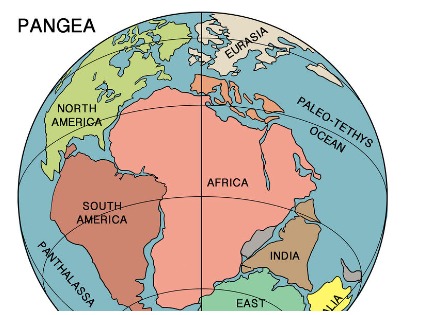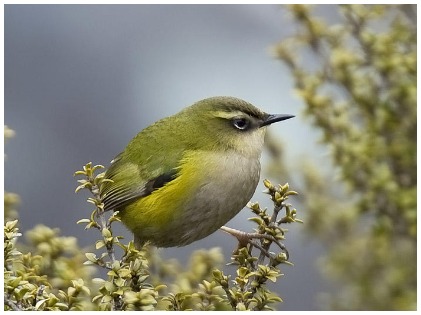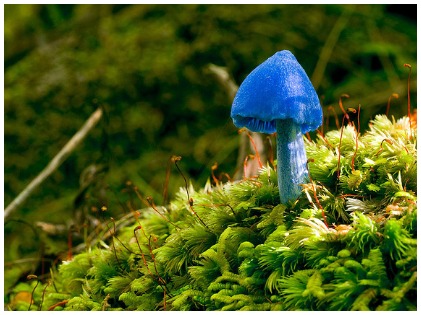New Zealand is a country with a uniquely rich and abundant variety of plants and insects, as well as fungi. The biodiversity in New Zealand is of a level comparable to the Galapagos Islands, which is a diverse world-famous ecosystem. In no other place across the entire planet can you find a wider range of birds and insects like in this land. It has only two species of bat being the representatives of New Zealand's mammal life. Several of the indigenous plants are also unique to New Zealand. Naturally, there is a lot of curiosity as to why New Zealand boasts such unique ecosystems.
The Scientific Theory
 Continental drift is a specific theory in science, which explains the formation of continents. Alfred Wegener came up with this idea over nine decades ago. The theory explains the beginning of the development of New Zealand's distinctive flora, fauna, and fungi. Today, this theory is widely popular and acceptable in the formation of various continents of the world.
Continental drift is a specific theory in science, which explains the formation of continents. Alfred Wegener came up with this idea over nine decades ago. The theory explains the beginning of the development of New Zealand's distinctive flora, fauna, and fungi. Today, this theory is widely popular and acceptable in the formation of various continents of the world.
According to a theory, the world was one big landmass. This was 250 years ago, and scientists call this landmass the Pangaea. This supercontinent eventually split into many parts. The division was initially into two large continents Gondwana and Laurasia. While Laurasia began drifting to the north Gondwana's drift was in the Southward direction. The two massive continents existed for 80 million years before breaking up into further pieces that are recognizable as the continents we now have on earth.
The Birth of New Zealand
 It is understood, or theorized, that the piece of land that would later be today's New Zealand began breaking itself away from Gondwana approximately 80 million years ago. The process took many years, and research suggests that the land finally broke from Gondwana about 65 million years ago. New Zealand has been an isolated island since then. Of course, when what is now called New Zealand broke away from Gondwana, the land took the flora, fauna, and fungi that was on it, with it.
It is understood, or theorized, that the piece of land that would later be today's New Zealand began breaking itself away from Gondwana approximately 80 million years ago. The process took many years, and research suggests that the land finally broke from Gondwana about 65 million years ago. New Zealand has been an isolated island since then. Of course, when what is now called New Zealand broke away from Gondwana, the land took the flora, fauna, and fungi that was on it, with it.
Some of the oldest species of the ancient landmass have resulted in newer species. Many species that exist today evolved from species originally from Gondwana. The relationship between the species is recognizable across various other species across the southern countries. Including nations like Australia, South America, and Africa. An example is the New Zealand kiwi, a distant relative of the ostrich of Africa, the rhea of South America, and the cassowary of Australia. All of these birds share a common ancestor that once lived in Gondwana.
Isolated Evolution
The last bridge between what is now New Zealand and what was then Gondwana was lost 65 million years ago. Because of this, New Zealand went on to become a landmass that is in isolation from the rest of the world. The species in this place went on to develop adaptability to the changing climatic conditions. In other words, the consequence of the evolution in isolation is that many native New Zealand species are uniquely adapted to the climate and life on the island alone. And they exist only in New Zealand. Examples of such species are the kahikatea, kauri, totara, kiwi, rimu, kauri snail, tuatara, and weta.
Continued Introduction of Species
 New Zealand continued to have new species of plants and birds coming to their country. This was with the help of floating from Gondwana in ocean currents or seeds and spores blown by the wind. Rata, Manuka, pohutukawa, and flax plants all came to New Zealand across the sea, as did bird species like the huia, kokako, and the saddleback.
New Zealand continued to have new species of plants and birds coming to their country. This was with the help of floating from Gondwana in ocean currents or seeds and spores blown by the wind. Rata, Manuka, pohutukawa, and flax plants all came to New Zealand across the sea, as did bird species like the huia, kokako, and the saddleback.
Even all the native bats came from across the seas long, long ago. Once the species come to New Zealand, they evolve in isolation. Just the way the others and now are distant relatives of their South American and Australian species.
There's no doubt that New Zealand is a wondrous place from a scientific and aesthetic point of view. In a world where so many species are under threat, New Zealand is a pocket of wonder and amazing finds. It is impossible to understand why New Zealand didn't have any mammal habitation. And this only adds to the mystery of this place. It is a place full of insects, plants, and birds from the mountaintops to the sea and with no mammals. Thanks to there being no predators, New Zealand is a treasure trove! And we hope the land continues to set an example for the rest of the world to follow!

